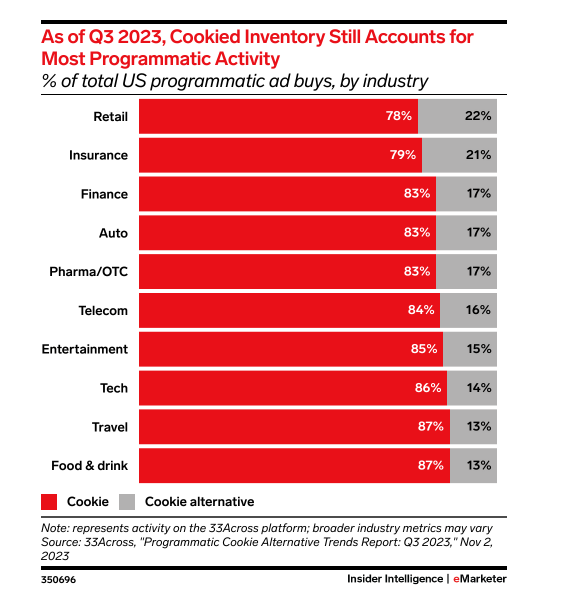Beginning the first week of 2024, Google is set to being phasing out third-party cookies. With cookied inventory accounting for 78% or more of programmatic ad buys, the post-cookie era will bring about a seismic shift in the way advertisers connect with their audiences. As third-party cookies become obsolete, marketers are faced with new challenges in understanding and reaching their target demographics. However, this shift also presents a unique opportunity for businesses to rethink their strategies and build more meaningful connections with their audience. Let’s take a look at some effective strategies to navigate the upcoming post-cookie era.
Leverage First-Party Data:
With the decline of third-party cookies, first-party data has become more valuable than ever. This is data collected directly from your audience through website interactions, subscriptions, or other engagements. By understanding your audience’s preferences, behaviors, and interests, you can create personalized and targeted campaigns that resonate with them on a deeper level.
Encourage users to share their preferences through surveys, subscriptions, or loyalty programs. This not only provides valuable insights but also establishes a transparent relationship with your audience, fostering trust.
Invest in Contextual Advertising:
Contextual advertising involves placing ads in environments that are relevant to the content being viewed. Instead of relying on user data, contextual advertising focuses on the context of the page or content. By understanding the context, advertisers can deliver more relevant and engaging ads without relying on personal information.
Explore partnerships with publishers and platforms that align with your brand and target audience. This ensures that your ads are placed in environments where they are more likely to be well-received.
Embrace AI and Machine Learning:
Artificial intelligence and machine learning technologies can play a pivotal role as the end of third-party cookies draws near. These technologies can analyze vast amounts of data to understand user behavior and predict preferences. By leveraging AI, marketers can create hyper-personalized campaigns that resonate with individual users, even without relying on third-party data.
Invest in AI-powered tools that can help you analyze and interpret data, allowing you to make informed decisions about your advertising strategy. These tools can also help automate certain processes, saving time and resources.
Build Transparent and Ethical Practices:
In an era where privacy concerns are at the forefront, transparency and ethical practices are crucial for building trust with your audience. Clearly communicate your data collection and usage policies, assuring users that their privacy is a top priority. Consider implementing user-friendly opt-in mechanisms that allow individuals to control the information they share.
Being transparent about your data practices not only complies with regulations but also helps build a positive brand image, fostering long-term relationships with your audience.
Explore Alternative Identifiers:
As third-party cookies fade away, advertisers are exploring alternative identifiers to track user behavior. These may include email addresses, device IDs, or even hashed information. While using alternative identifiers, it’s essential to prioritize user privacy and adhere to regulations. Striking the right balance between tracking for personalization and respecting user privacy is key in this evolving landscape.
In conclusion, the phasing out of third-party cookies presents both challenges and opportunities for marketers. By focusing on first-party data, embracing contextual advertising, leveraging AI, building transparent practices, and exploring alternative identifiers, businesses can not only adapt but thrive in this new era of digital marketing. Building authentic connections with audiences is at the heart of these strategies, ensuring that brands can continue to engage and resonate with their target demographic in a privacy-conscious environment.
